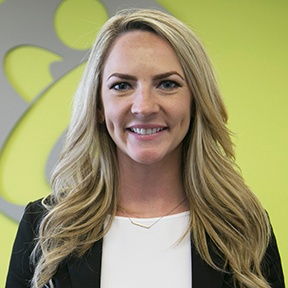 Welcome to “The One Thing,” a Businessolver blog series that takes a closer look at our approach to client service and how we embody the key pillars of our business: Perform, Engage, Innovate, and Give Back.
Welcome to “The One Thing,” a Businessolver blog series that takes a closer look at our approach to client service and how we embody the key pillars of our business: Perform, Engage, Innovate, and Give Back.

A major part of our mission is to delight our clients, and Solvers recommit each day to doing so. “The One Thing” shares insights from Solvers on how they stay true to the mission and motivated to bring it to life in their daily work.
No matter what your industry, meetings will always be a part of office life. And when they are successful, they can help facilitate innovation and progress, and help solve problems. On the flip side, when they are unsuccessful, a bad meeting can lead to brain drain or, worse, become a waste of valuable time. The latter can happen if both parties are ill prepared or unwilling to buy into the goals of the meeting and truly engage with the subject at hand.
Here at Businessolver, we have a meeting philosophy that stems around the MAGIC principles: Meet or not, Agenda, Guideline, Involvement, Clarity. These principles helped reshape the way I approach my client meetings. In the past, I would try to prepare the best I could, but the meetings might still end in a chaotic mess of undeliverable deliverables and unsolved issues. Of course, I wanted to play the blame game at first, but I quickly realized, despite the fact that the whole purpose of a meeting is to communicate with your client, you may be the one causing a communication breakdown if your client doesn’t have a clear path of action on their end.
What do I mean by this?
In order to have a successful meeting, both parties need to be willing to prepare and engage. We use the 40-20-40 strategy, which calls for more preparation before and after the meeting, instead of trying to address every issue within the limited amount of meet time. (40 percent of effort is in prep, 20 percent is the actual meeting, and an additional 40 percent is post-meeting work.)
Meetings can amplify a true partnership when it comes to communicating with clients. Here are some lessons I’ve learned from my successful, and unsuccessful, meetings:
- When your meetings start feeling unsuccessful, take stock and step back by looking at the bigger picture. Ask yourself: What current work do each of us owe each other and what of it is actually owned by the client? Are they feeling overburdened? Is there something we can do to help them accomplish their assigned tasks?
- Redefine how client meetings are conducted. It’s really helpful to define the amount of time you’ll spend on each issue so you aren’t talking in circles or going off on tangents. Decide at the beginning of the meeting which are the most pressing topics to cover and focus on those first, if you have a very full agenda.
- Engagement is the key to a successful meeting. If you feel like your client isn’t engaging with you, try to get back to the basics; maybe they feel like you skipped over or skimped on an issue or they aren’t feeling heard. Maybe you feel like they aren’t prepared for the meeting you took the time to schedule. Infusing some empathy into the conversation and tackling these issues head on is key to a lasting, happy, and successful client relationship.
A true client partnership begins with a willingness to engage and work together to achieve our mutual goals. Everyone has bad meetings from time to time. However, the most successful client partnerships are built on the bedrock of respect, empathy and open communication. Cultivate those, and soon you’ll be having great meetings full of meaningful discussion, impactful decisions and roll-up-your-sleeves teamwork.



